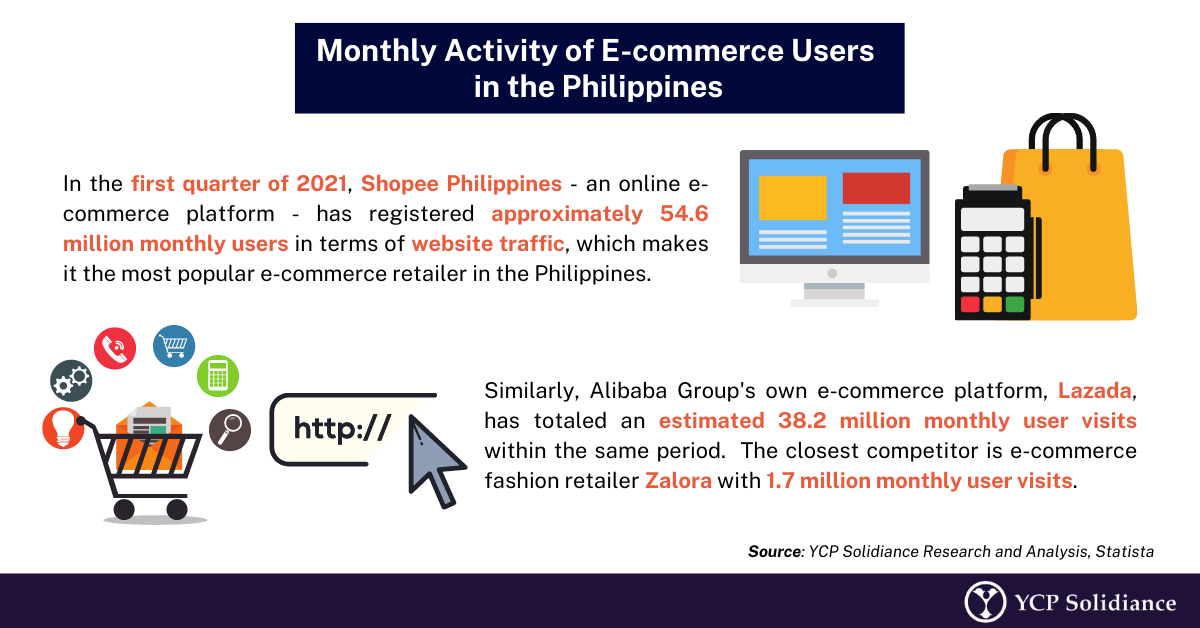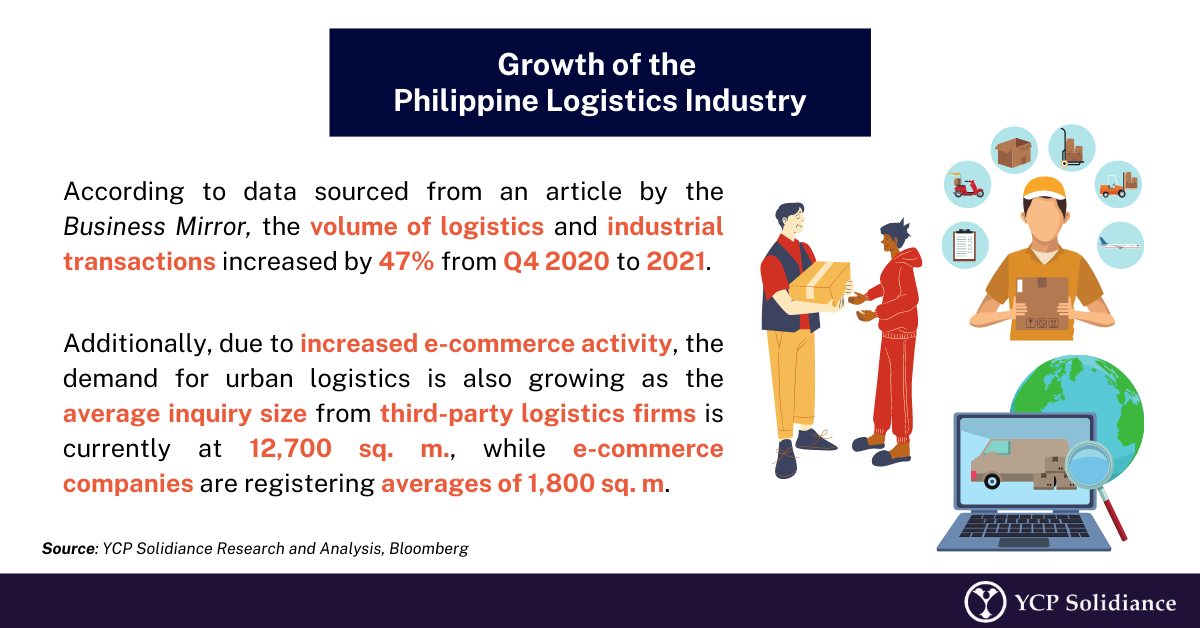To address the inefficiencies brought about by manual processes, such as a lack of order status transparency and disorganized flow of goods, the Philippine logistics industry has turned to accelerating its digitalization, which presents several enticing benefits.
Specifically, digitalization enables the logistics industry to provide a greater sense of transparency regarding the order status of goods, which also helps reduce port congestion and thus, increases operational efficiency. Digitalization also provides the logistics industry with a degree of flexibility that allows companies to quickly adapt to new business opportunities—including the e-commerce boom that is now driving consumer behavior. 
The Influence of E-Commerce
Given that the e-commerce supply chain entails multi-layered logistics processes—such as product tracking, importation/exportation, and delivery fulfillment—the continued growth of the industry also means increased demands toward its logistics counterparts. As such, given that the e-commerce industry within the Philippines will continue to grow, the country’s logistical capability must follow suit.
In fact, according to data from the Philippine Department of Trade and Industry (DTI), the Philippine e-commerce industry accounted for 12 billion USD, or 3.4% of the country’s GDP, in 2020. By 2022, this amount is expected to grow even further as the e-commerce industry is forecasted to generate 24 billion USD, which would account for 5.5% of the national GDP.
The monthly activity of e-commerce platforms in the Philippines also indicates further growth. As per market data from Statista, the country’s leading e-commerce platform, Shopee Philippines, registered a monthly traffic output of approximately 54.6 million users in the first quarter of 2021. Following close behind is Lazada, which recorded an estimated 38.2 million monthly user visits within the same period. 
Digital Transformation in Logistics
Given that user activity is expected to increase in the coming years, customer expectations that are heavily influenced by logistical capability are also expected to evolve. According to the white paper Digitalization in the Philippine Logistics Industry by YCP Solidiance and the Supply Chain and Management Association of the Philippines (SCMAP), e-commerce consumers will eventually expect value-added services—such as same-day delivery, guaranteed product returns, and accurate delivery tracking—as the norm, all of which are dependent on a solid and efficient logistical infrastructure in place.
To keep up with the specialized needs of the e-commerce industry, the Philippines’ logistics industry is accelerating its digitalization measures. One such measure is the upcoming government initiative centered around the Unified Logistics Pass (ULP) system, which aims to expedite the issuing and validating of logistics firms’ certificates of public convenience (CPCs).
Via the implementation of unified quick response codes, or QR codes, logistics companies will minimize time spent at ports and economic zones, thereby reducing delivery bottlenecks. The use of such a system will help establish a centralized database for truck verification, but more importantly, it will help reduce downtime of vehicles in transport which ultimately increases overall efficiency.
As businesses will look to rebound in 2022, the demand and expectation for efficient logistical services will continue to rise. To cope with the growing interest of businesses and consumers alike, expect the Philippine logistics industry to execute additional measures that hinge on the application of digitalization.
For more information on the digital status of the Philippines’ business industries, subscribe to our newsletter here.







